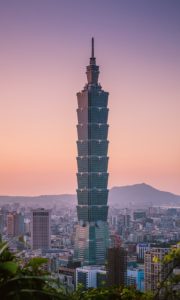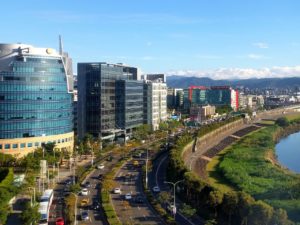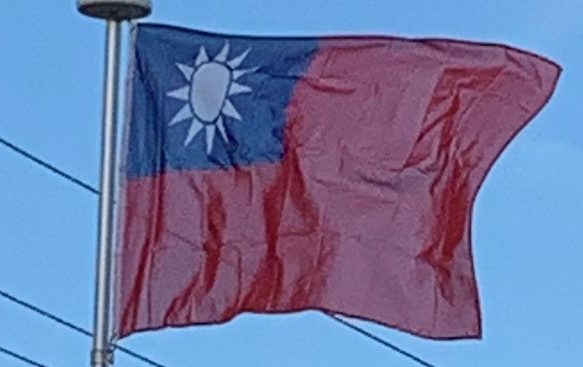
Japanese rule prior to and during World War II brought changes in the public and private sectors, most notably in the area of public works, which enabled rapid communications and facilitated transport throughout much of the island. The Japanese also improved public education and made it compulsory for all residents of Taiwan. By 1945, hyperinflation was in progress in mainland China and Taiwan as a result of the war with Japan. To isolate Taiwan from it, the Nationalist government created a new currency area for the island, and began a price stabilization programme. These efforts significantly slowed inflation.
When the KMT government fled to Taiwan it brought millions of taels (where 1 tael = 37.5 g or ~1.2 ozt) of gold and the foreign currency reserve of mainland China, which, according to the KMT, stabilized prices and reduced hyperinflation. Perhaps more importantly, as part of its retreat to Taiwan, the KMT brought the intellectual and business elites from mainland China. The KMT government instituted many laws and land reforms that it had never effectively enacted on mainland China. The government also implemented a policy of import-substitution, attempting to produce imported goods domestically.
In 1950, with the outbreak of the Korean War, the United States began an aid program which resulted in fully stabilized prices by 1952. Economic development was encouraged by American economic aid and programs such as the Joint Commission on Rural Reconstruction, which turned the agricultural sector into the basis for later growth. Under the combined stimulus of the land reform and the agricultural development programs, agricultural production increased at an average annual rate of 4 per cent from 1952 to 1959, which was greater than the population growth, 3.6%.

In 1974, Chiang Ching-kuo implemented the Ten Major Construction Projects, the beginning foundations that helped Taiwan transform into its current export driven economy. Since the 1990s, a number of Taiwan-based technology firms have expanded their reach around the world. Well-known international technology companies headquartered in Taiwan include personal computer manufacturers Acer Inc. and Asus, mobile phone maker HTC, as well as electronics manufacturing giant Foxconn, which makes products for Apple, Amazon, and Microsoft. Computex Taipei is a major computer expo, held since 1981.
Today Taiwan has a dynamic, capitalist, export-driven economy with gradually decreasing state involvement in investment and foreign trade. In keeping with this trend, some large government-owned banks and industrial firms are being privatized. Real growth in GDP has averaged about 8% during the past three decades. Exports have provided the primary impetus for industrialization. The trade surplus is substantial, and foreign reserves are the world’s fifth largest. The currency of Taiwan is the New Taiwan dollar.
Since the beginning of the 1990s, the economic ties between Taiwan and the People’s Republic of China have been very prolific. As of 2008, more than US$150 billion have been invested in the PRC by Taiwanese companies, and about 10% of the Taiwanese labor force works in the PRC, often to run their own businesses. Although the economy of Taiwan benefits from this situation, some have expressed the view that the island has become increasingly dependent on the mainland Chinese economy. A 2008 white paper by the Department of Industrial Technology states that “Taiwan should seek to maintain stable relation with China while continuing to protect national security, and avoiding excessive ‘Sinicization’ of Taiwanese economy.” Others argue that close economic ties between Taiwan and mainland China would make any military intervention by the PLA against Taiwan very costly, and therefore less probable.
Transportation:
Civilian transport in Taiwan is characterized by extensive use of scooters. In March 2019, 13.86 million were registered, twice that of cars.
